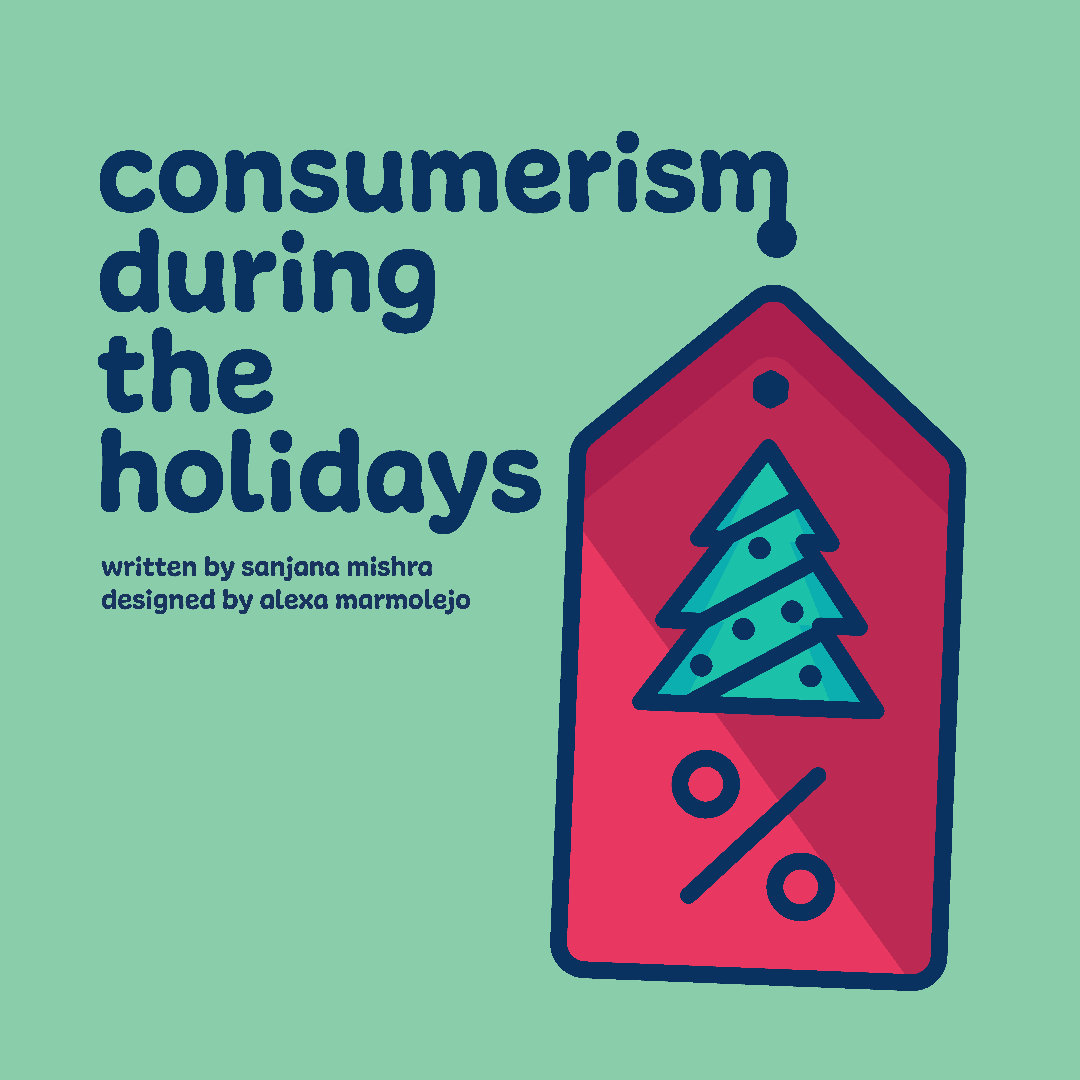
It’s that time of year again — with Black Friday deals and red and green peppermint-flavored food items, we are officially in the brunt of the biggest time of spending: the holiday season. As soon as November rolls around, decorative ornaments and wreaths replace spooky jack-o-lanterns and cobwebs, signaling that it’s time for consumers to get swept up in the festivities and spend their money yet again.
Starbucks’ seasonal drinks and holiday cups have returned. Giant snowflakes now hang from Target ceilings all across the country. Stacks of snowman-shaped chocolate sit at the front of every grocery store. Such an immediate switch seems almost like a Christmas miracle … except it’s not.
The boom in consumerism during the holidays is no accident. Companies’ marketing tactics target buyers’ vulnerabilities with deals, sales and changes in the visual layout of the store, all to stimulate impulsive spending. According to a 2022 analysis from the International Journal of Consumer Studies, impulse buying generates more than $17 billion in annual revenue in the United States. The pressure to find the perfect holiday gift gives rise to financial debt and distress as well as lowered self-control. A survey from LendingTree, an online marketplace, found that 35% of Americans took on holiday debt in 2022 and accumulated an average debt of $1,549.
But what’s wrong with a bit of splurging as long as the purchases are put to good use? The problem is that much of it ends up thrown away or lying abandoned and forgotten in the back of a closet. Snappy, a personalized gifting service’s 2022 Holiday Gift Report revealed that 16.8% of unwanted gifts are thrown away. This isn’t just a waste of money, but also a waste of the materials, water, energy, labor and other resources that go into manufacturing such products, not to mention the sheer amount of boxes, plastic and wrapping paper that litter the floor after gifts have been unwrapped.
It’s time for consumers to make smarter purchases and form less wasteful habits. Practice budgeting and mindful spending so as not to get caught up in impulsive buying. Make homemade gifts or cards, which adds even more of a personal touch to presents. Reduce the amount of plastic and packaging consumed by ordering several items in one shipment. Find a new owner for an unwanted gift by either selling, regifting or donating it. Among those that received unwanted gifts last year, 31.2% regifted them and 26.8% donated them. This is a necessary start to making our holiday seasons more sustainable and affordable.